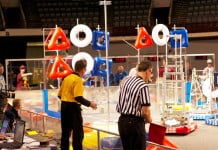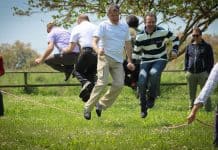 Want to make your meetings more engaging and rewarding for attendees?
Want to make your meetings more engaging and rewarding for attendees?
Consider taking a leaf from Flipped Learning, an education concept that “flips” the traditional classroom approach, putting students at the center of their own learning.
According to FlippedLearning.org, Flipped Learning is defined as a “pedagogical approach in which direct instruction moves from the group learning space to the individual learning space, and the resulting group space is transformed into a dynamic, interactive learning environment where the educator guides students as they apply concepts and engage creatively in the subject matter.”
No worries, I won’t end here in case you are scratching your head. Let’s break this concept apart this so we can get a better understand of flipped learning and how it might apply to meetings. FlippedLearning.org defines the four pillars of flipped learning as the following:
“F” stands for Flexible Environment: The instructor may rearrange the learning space in order to accommodate lessons that support a group or individual work. Flexibility is also applied to expectations of student timelines, as well as learning assessments.
“L” stands for Learning Culture: This shifts from a teacher-centered to a learner-centered approach. Students participate in construction and evaluation of knowledge in order to create a more meaningful experience.
“I” stands for Intentional Content: This aids the students in developing a conceptual understanding. Not only do they determine subject matter, but also what materials will be used for the lessons and teachings.
“P” stands for Professional Educator: It may sound like the teacher in this equation is taking a day off, but it is quite the opposite. Flip Learning calls for continual observation, feedback, assessment and more on the part of the teacher.
F: flexible environment
L: learning culture
I: intentional content
P: professional educator
What does all of this mean for the meeting planner who is looking to drive more engagement and return on investment for attendees? Here are some helpful hints for making the “flip” happen at your meetings:
- Think in questions, not solutions. Rather than providing points to be covered in workshops and sessions, have your presenters ask questions. This will engage your participants in the process.
- Gain trust from the participants. Ask them what they want to learn, what topics should be discussed, and encourage them to come in with their ideas. You can do this by soliciting input prior to the meeting.
- Plan for more downtime: Every minute should not be scheduled, instead make sure to include plenty of time for participants to focus, discuss and relax.
- Switch from “attendee” to “learner.” When you think of your attendees as learners you will automatically shift the type of meeting space, set-up and agenda you create.
By bringing this new way of meeting, you and your “learners” will experience greater interaction, engagement and attention, as well as a feeling of ownership. It will surely make your meetings much more memorable!










